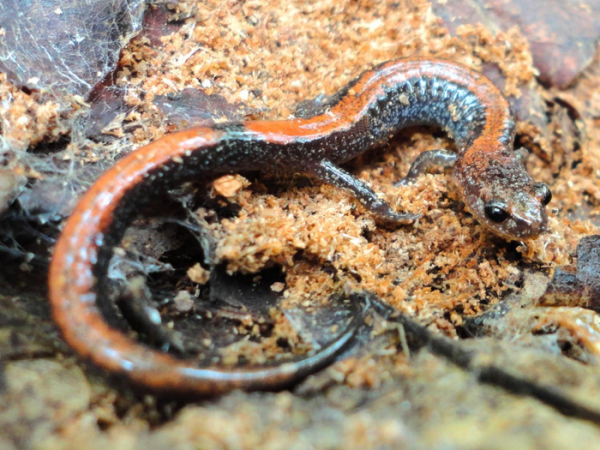If average temperatures rise as projected in eastern North America in coming decades, at least one widespread amphibian species likely will be unable to adjust, and its range may shift northward, according to a new study led by Penn State scientists.
In a novel experiment, researchers devised a method to measure the metabolic rate of red-backed salamanders from different regions exposed to warmer temperatures — analyzing how much more energy the small, hardy woodland amphibians would expend to survive in the forests they now inhabit from Quebec south to North Carolina, and west to Missouri and Minnesota.
To stay cool and not burn energy, salamanders have evolved strategies such as burrowing under rocks and logs, explained study co-author David Miller, associate professor of wildlife population ecology. But if they are hiding to stay cool for much longer periods, they are not foraging and eating, and at the end of a long summer their condition is deteriorated.
“Because these salamanders are ectotherms, cold-blooded animals, essentially what happens is when it is cold, they quit burning energy — as long as they don't freeze, they can go long periods without food,” said Miller, who’s research group in the College of Agricultural Science has been studying the demise of amphibians for the last decade. “Conversely, in the summer, when it's really warm, their body temperature is elevated, and that raises how much energy they consume. So, during the warmest part of the year, if they’re not eating, they’re experiencing an energy deficit.”
Read more at: Penn State University
To stay cool and not burn energy, salamanders have evolved strategies such as burrowing under rocks and logs. But if they are hiding to stay cool for much longer periods, they are not foraging and eating, and at the end of a long summer their condition is deteriorated. (Photo Credit: David Munoz)


